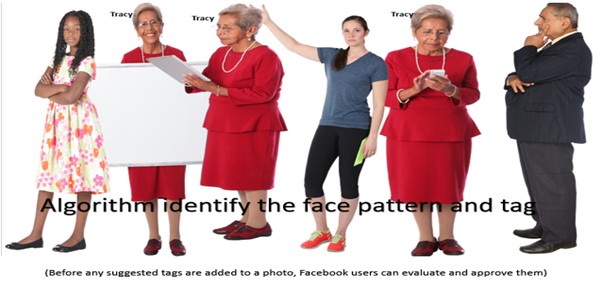
AI Powered by Cybersecurity
DESCRIPTION: Technology is rapidly growing, and the world is being shaped by new trends and opportunities. Exciting developments are happening across the spectrum of technologies such as artificial intelligence (AI), Internet of Things (IOT), cloud computing, augmented reality, and so on. These emerging technologies have their own benefits and challenges. Let's look at how AI is powered by cybersecurity.
 Image Source : Powerpoint-Image Stock
Image Source : Powerpoint-Image StockCybersecurity (CS)
Cybersecurity is a process to protect, prevent, and detect unwanted attacks or unauthorised access. Cybersecurity is a combination of people, policies, processes, and technologies used by organisations to safeguard their cyber assets. Cybersecurity is optimised to business-defined levels, balancing resource requirements with usability/manageability and the degree of risk offset (Gartner Glossary). As reliance and use of technology increases, so does the impact of cyber threats and attacks. Cybersecurity practices safeguard against threats like phishing, denial of service (DOS), malware attacks, et.al. that originate internally or externally in any business space or even personal.
Furthermore, as per the digital magazine-Atos report (2023), there are various categories of cyber threats, for example:
Ransomware threats: It is a type of malicious software designed to encrypt the victim's files and demand payment for the decryption key.
Supply-chain threats: It targets the networks and systems of suppliers and vendors who have access to the computer systems and data of an organisation. These threats may result in data loss, monetary losses, and reputational harm.
Cloud Threats: It targets cloud computing environments, which consist of storing, processing, accessing data and applications on third-party servers with internet access.
Mobile Threats: It targets mobile devices that store sensitive data and are used for both personal and professional purposes.
As technology evolves and becomes more pervasive in our daily lives, the likelihood of cyberattacks also rises. Technology specialists then devised ways to defend against cyberattacks. These cybersecurity solutions can be classified according to their functionality, such as network security, data security, application security, cloud security, access management, and so on. These solutions protect sensitive information while simultaneously preserving data confidentiality.
Artificial intelligence (AI)
Artificial intelligence is a buzz word, creating lots of noise, whether it is in business, research, or education. According to NIST definition, AI is a branch of computer science that focuses on creating data-processing systems that can engage in activities like reasoning, learning, and self-improvement that are typically associated with human intelligence. It can be summed up as a system that performs tasks like perception based decision-making and natural language processing that would typically need human intellect.
Let me give you an example, when you upload images on Facebook, you might observe, system detects faces and automatically tags individuals in the image. The system scans the available data using machine learning algorithms to recognise faces and spot patterns that enable it to precisely match faces to people. Facebook uses AI-driven face recognition technology that works with deep learning algorithms to be able to recognise the face patterns of the people.
 Image Source : Powerpoint-Image Stock
Image Source : Powerpoint-Image StockHow does artificial intelligence contribute to the field of cybersecurity?
In brief, we can say that AI is an enabler for cyber security. AI has the potential to detect, prevent, and respond to cyberattacks, enhancing the effectiveness of cybersecurity solutions. For instance:
-AI algorithms help to analyse data sets and find trends that points to potential cyber-attacks;
-It also analyses the behaviour patterns of a malicious software virus and assesses the risks;
-AI has the potential to improve authentication procedures;
-AI can automate responses to likely attacks and reduces response time and damage, while also predicting future attacks.
On the other hand, hackers or cybercriminals also use AI to increase the impact of their attacks. Cybercriminals use AI-driven methods to create complex techniques to evade detection and infiltrate computer systems and networks.
Meanwhile, cybercrime is continuously increasing as we use more and more technology. Security operations analysts (SOAs) are focusing on AI to detect prospective attacks. In addition, they are putting efforts to customise to incorporate unique characteristics that will significantly minimize the response time to such attacks. As of now, we understand that AI is supporting cybersecurity solutions. Let's throw light on whether cybersecurity is better than AI.
However, on one hand, cybersecurity provides solutions or strategies to protect systems, and AI creates intelligent patterns to apply those solutions effectively for a better outcome. CSET ( Center for Security and Emerging Technology) is working on a project called CyberAI. The purpose of the project is to automate cyber operations and prevention using AI. According to a Deloitte Insights post (Tech Trends, 2022) organisations may be able to reply more quickly than an attacker can move by using CyberAI.
It can also help them predict an attacker's next move and prepare an immediate response. CyberAI tools and technology are still in the early phases of adoption. Moreover, the post also states, AI can act as a force multiplier, assisting tech professionals in automating time-intensive tasks and expediting containment and response.
The primary goal of cybersecurity is to safeguard systems, networks, data, etc., and AI can be employed to strengthen cybersecurity defences. Hence, cybersecurity and AI both are important to manage evolving cyberthreats.
Also Read: Virtual Influencer: A wave of the future